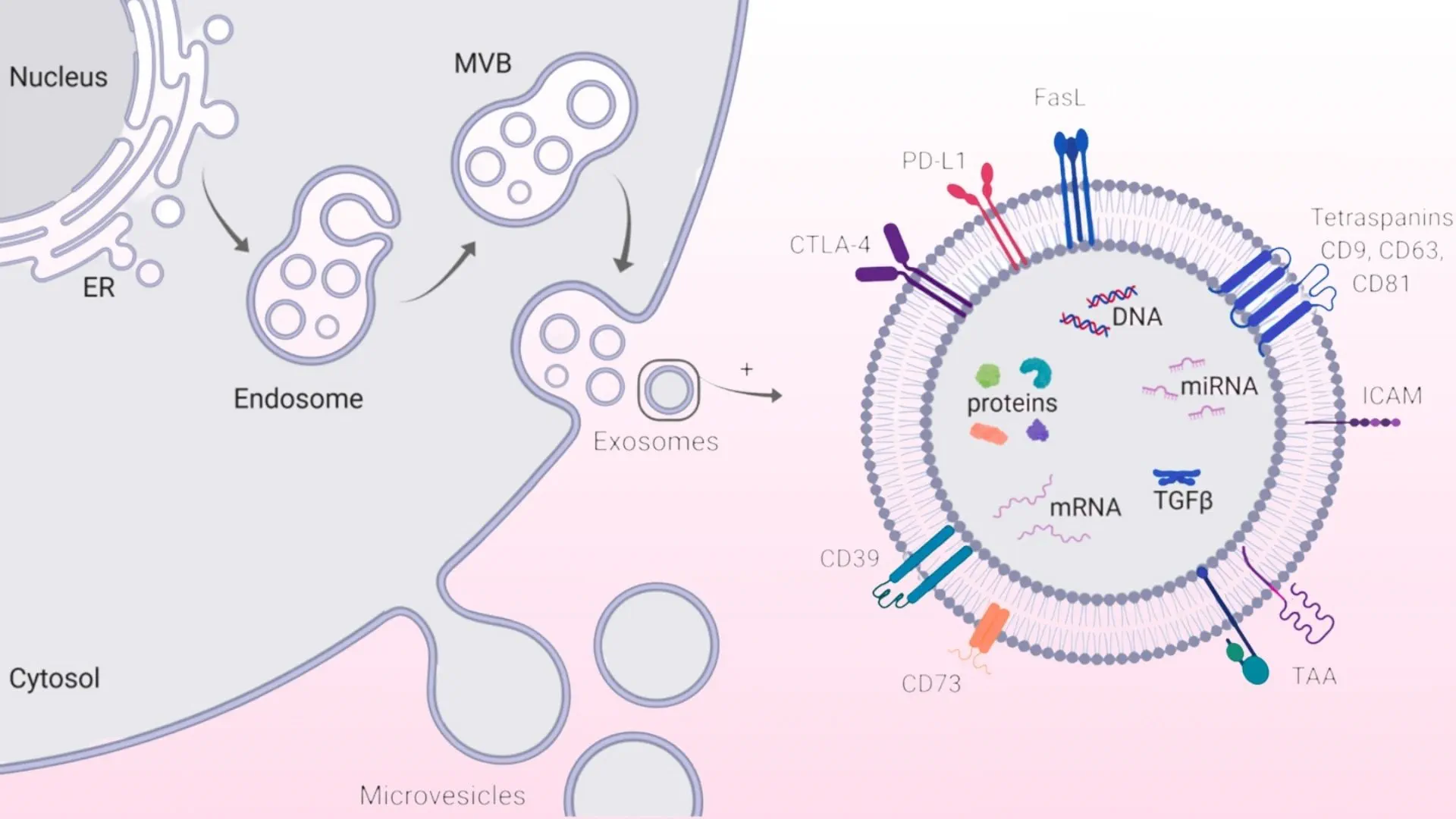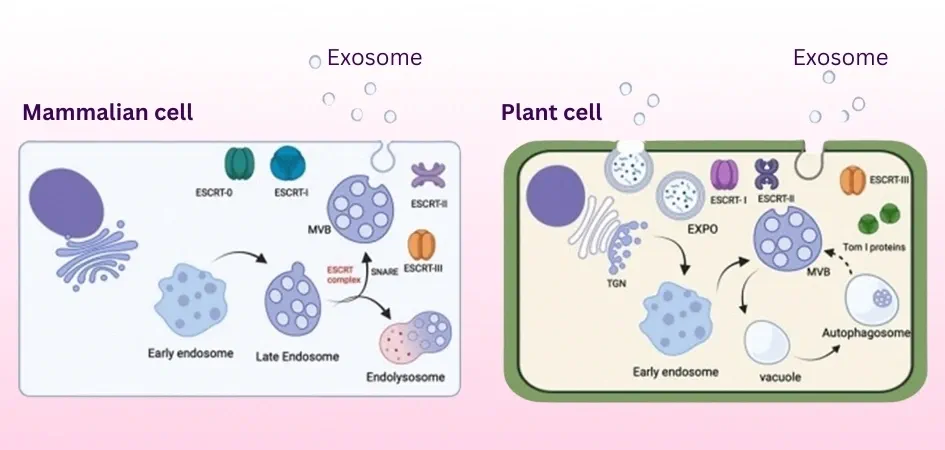
Exosomes are one of the most talked-about innovations in modern aesthetic medicine. These microscopic extracellular vesicles have already transformed the approach to regenerative therapy and have become a key component in new skin rejuvenation protocols. Thanks to their ability to stimulate natural skin recovery and renewal processes, exosomes are becoming the most important anti-aging trend in 2025.
In this article, we will explain what exosomes are, how they work, what types of exosomes exist, what benefits they provide in aesthetic procedures, and why their popularity is growing rapidly.
What Are Exosomes?
Exosomes are microscopic vesicles released by body cells that contain proteins, lipids, microRNAs, and other signaling molecules. They participate in intercellular communication and transmit information from one cell to another. As a result, exosomes regulate inflammation, stimulate tissue regeneration, and boost collagen synthesis [1].
In aesthetic medicine, exosomes derived from mesenchymal stem cells are most commonly used. These are universal cells capable of transforming into various tissue types and actively restoring damaged areas. They are extracted from adipose tissue, bone marrow, placenta, or umbilical cord blood. Such exosomes exhibit high biological activity and are safe for the skin.
Types of Exosomes by Origin
Today, two main types of exosomes are used in aesthetic medicine:
1. Animal-derived (mainly human)
Produced from mesenchymal stem cells (MSCs)
Possess high regenerative potential
Commonly used in professional procedures: injectable or device-assisted
2. Plant-derived
Extracted from plant sources (e.g., green tea, ginseng, aloe)
Less aggressive, suitable for home care and prevention
Used in skincare for sensitive skin and maintenance programs

Both types of exosomes demonstrate antioxidant and anti-inflammatory properties, but animal-derived exosomes show a more pronounced rejuvenating effect due to their deeper impact on skin cells [2].
How Do Exosomes Work on the Skin?
Exosomes, when introduced into the skin via injections or device-based methods (e.g., fractional microneedle RF), trigger a cascade of rejuvenation processes:
Stimulate collagen and elastin production
Improve microcirculation
Reduce inflammation
Increase skin firmness and elasticity
Accelerate healing after aggressive procedures (laser, peels)
The effect of exosome therapy is particularly noticeable when treating dull, dehydrated skin, loss of tone, post-acne marks, and photoaging [1, 2].
Benefits of Exosome Therapy
Fast skin recovery after laser, peels, microneedling
Minimal risk of side effects, since exosome components are biocompatible with the skin
Versatile application — can be used alone or as part of combination protocols
Suitable for all skin types and ages
Who Is Exosome Therapy For?
Exosome-based treatments are recommended for patients who:
Seek gentle and safe rejuvenation without fillers
Are recovering from aggressive procedures
Exhibit signs of aging: loss of skin density, wrinkles, pigmentation, which can be improved with professional protocols including Ultragen X
Suffer from post-inflammatory pigmentation, acne scars, or couperose
Want to stimulate hair growth and improve scalp health with professional solutions such as Ultra Hair
Which Procedures Can Be Combined with Exosomes?
Exosomes work perfectly in combination with most modern cosmetic techniques:
Laser resurfacing
Chemical peels
Microneedling (including RF)
Biorevitalization and mesotherapy
SMAS lifting
Such combinations enhance the effect of procedures, reduce downtime, and increase patient satisfaction with the results [2, 3].
Exosomes represent a true revolution in aesthetic medicine, offering an effective, safe, and scientifically backed solution for skin rejuvenation. Today, they are becoming an essential part of anti-aging programs in clinics worldwide. With exosomes, cosmetic professionals now have a powerful tool that not only improves appearance but truly restores skin health from within.
If you are looking for a gentle and progressive rejuvenation method — exosome therapy may be your #1 choice.
Choi, Y., Hong, S., & Kim, Y. (2023). "Exosomes in Dermatology and Aesthetic Medicine: A New Frontier." Journal of Cosmetic Dermatology, 22(5), 1254–1271.
Kang, H. W., & Lee, J. H. (2022). "The Role of Exosome Therapy in Skin Rejuvenation." Clinical and Experimental Dermatology, 47(9), 1732–1739.
Park, J., & Seo, Y. H. (2024). "Combined Application of Microneedling and Exosomes in Anti-Aging Treatments." Aesthetic Medicine Reports, 19(1), 55–66.